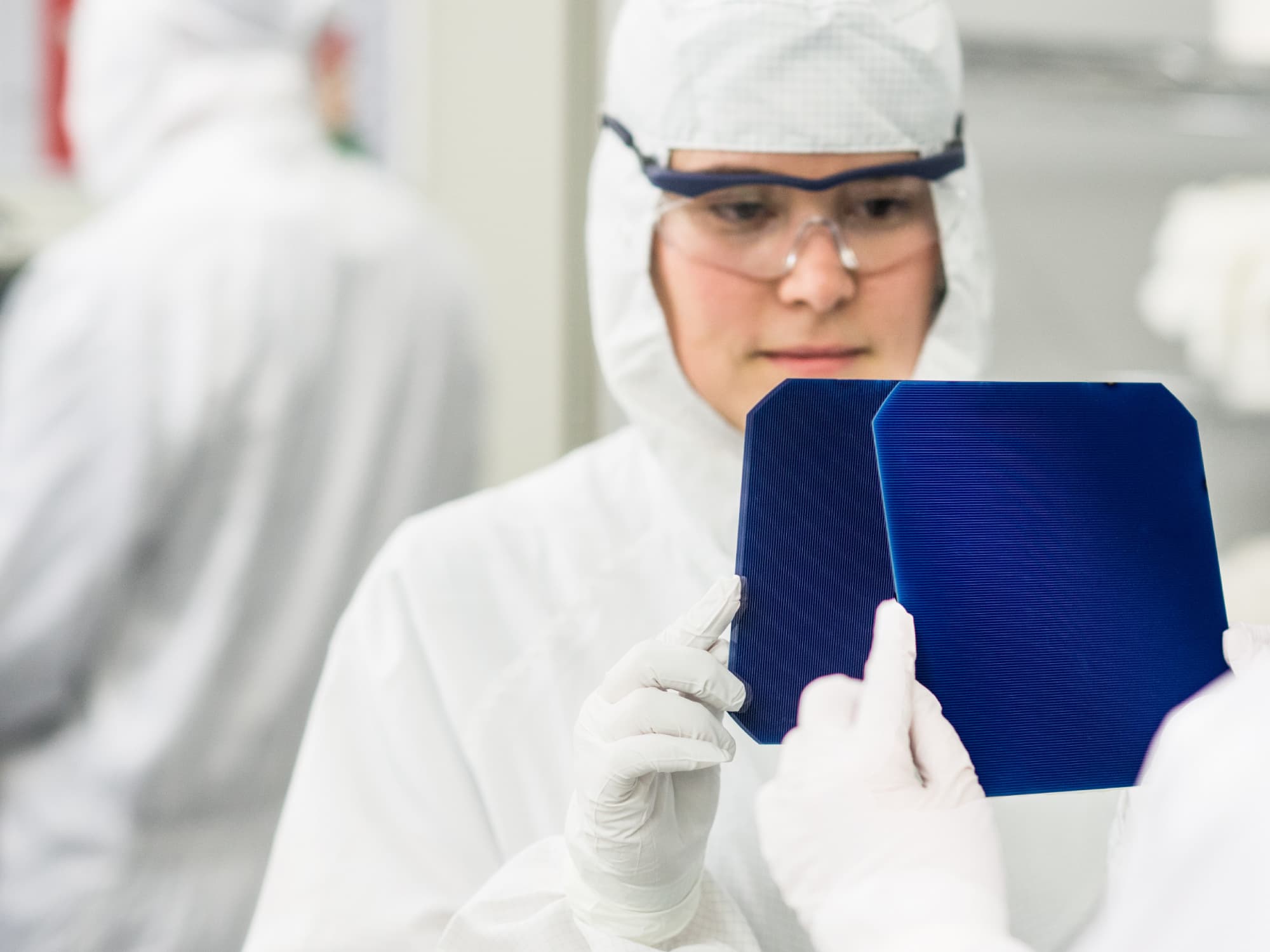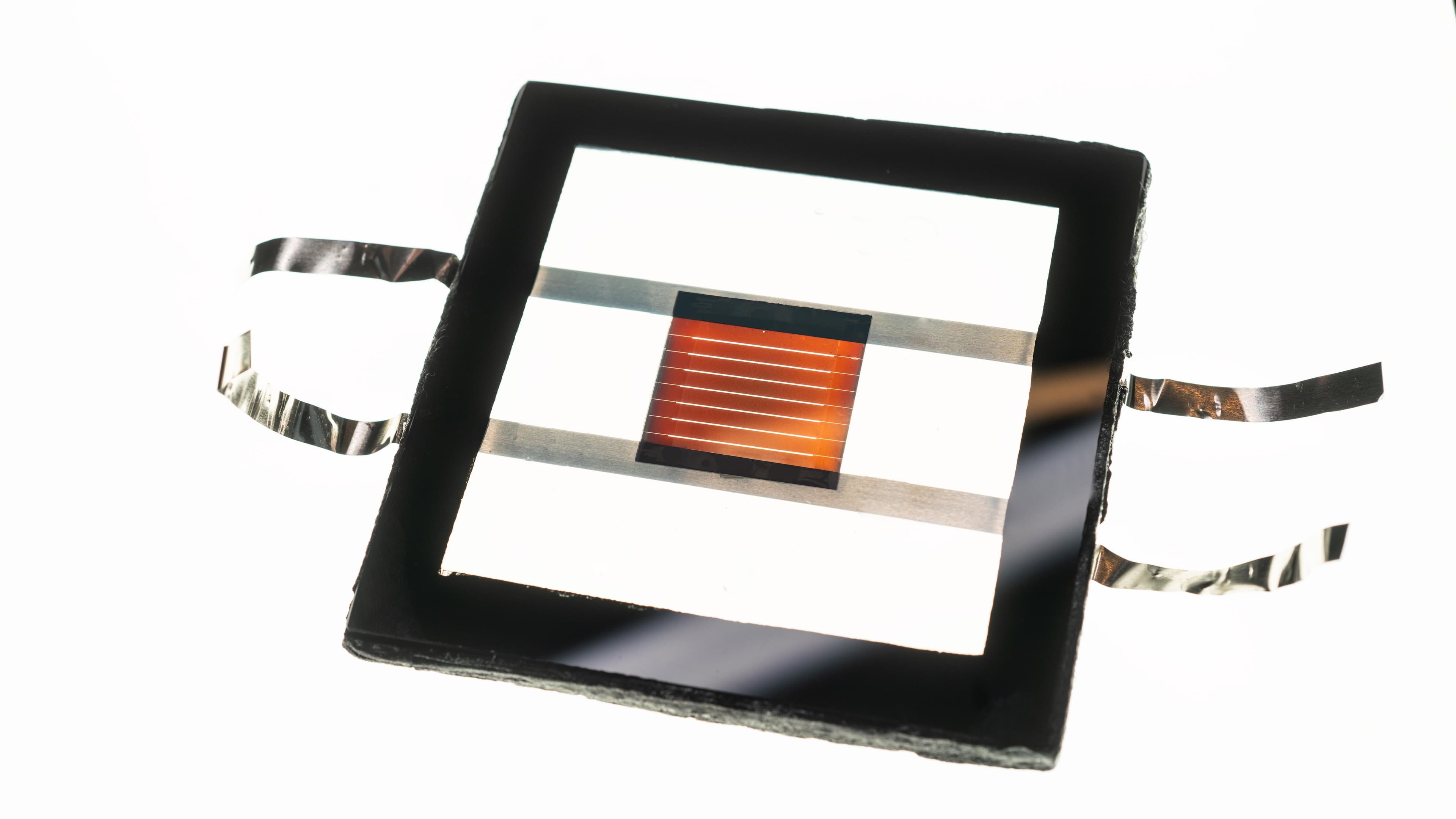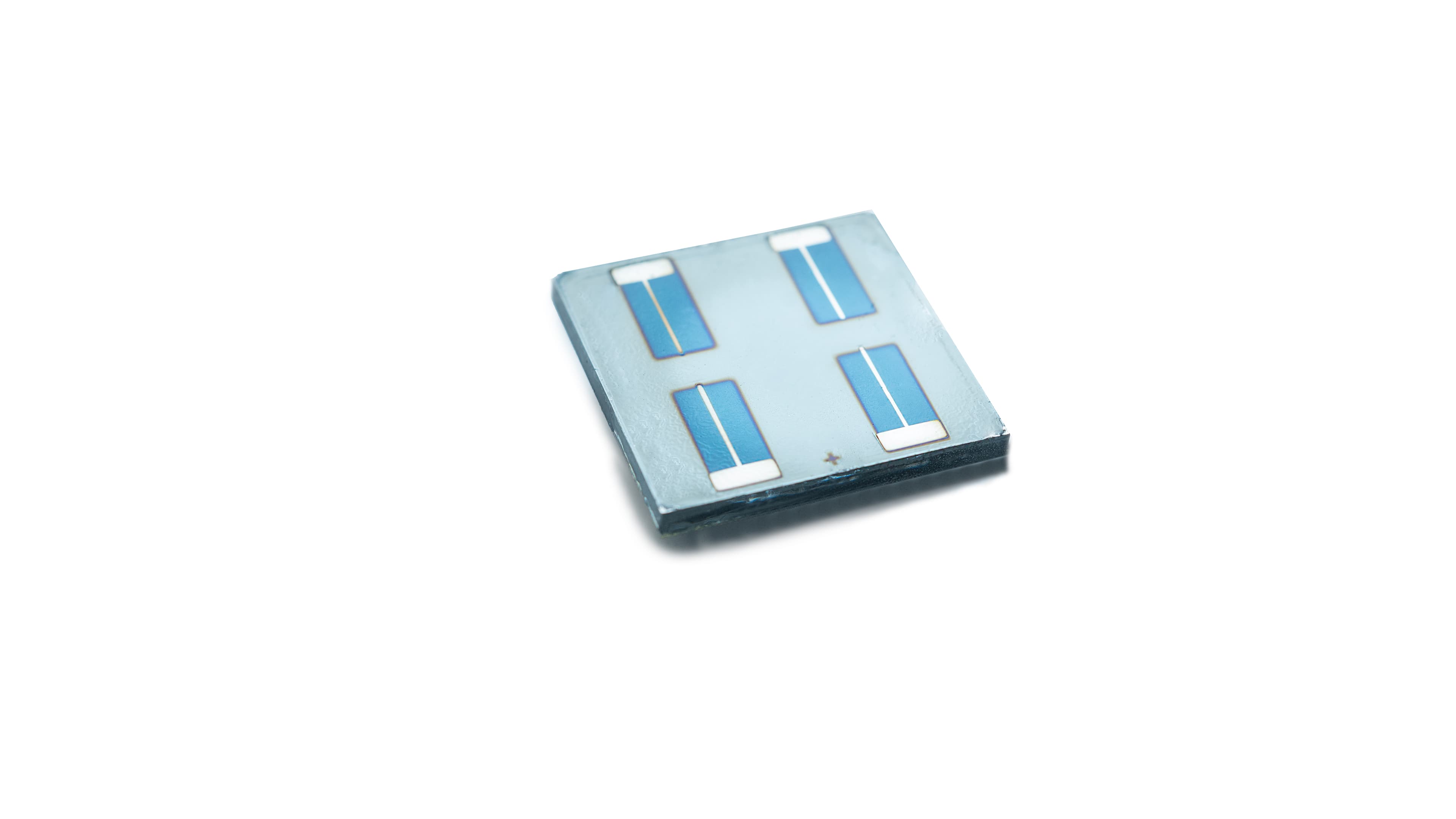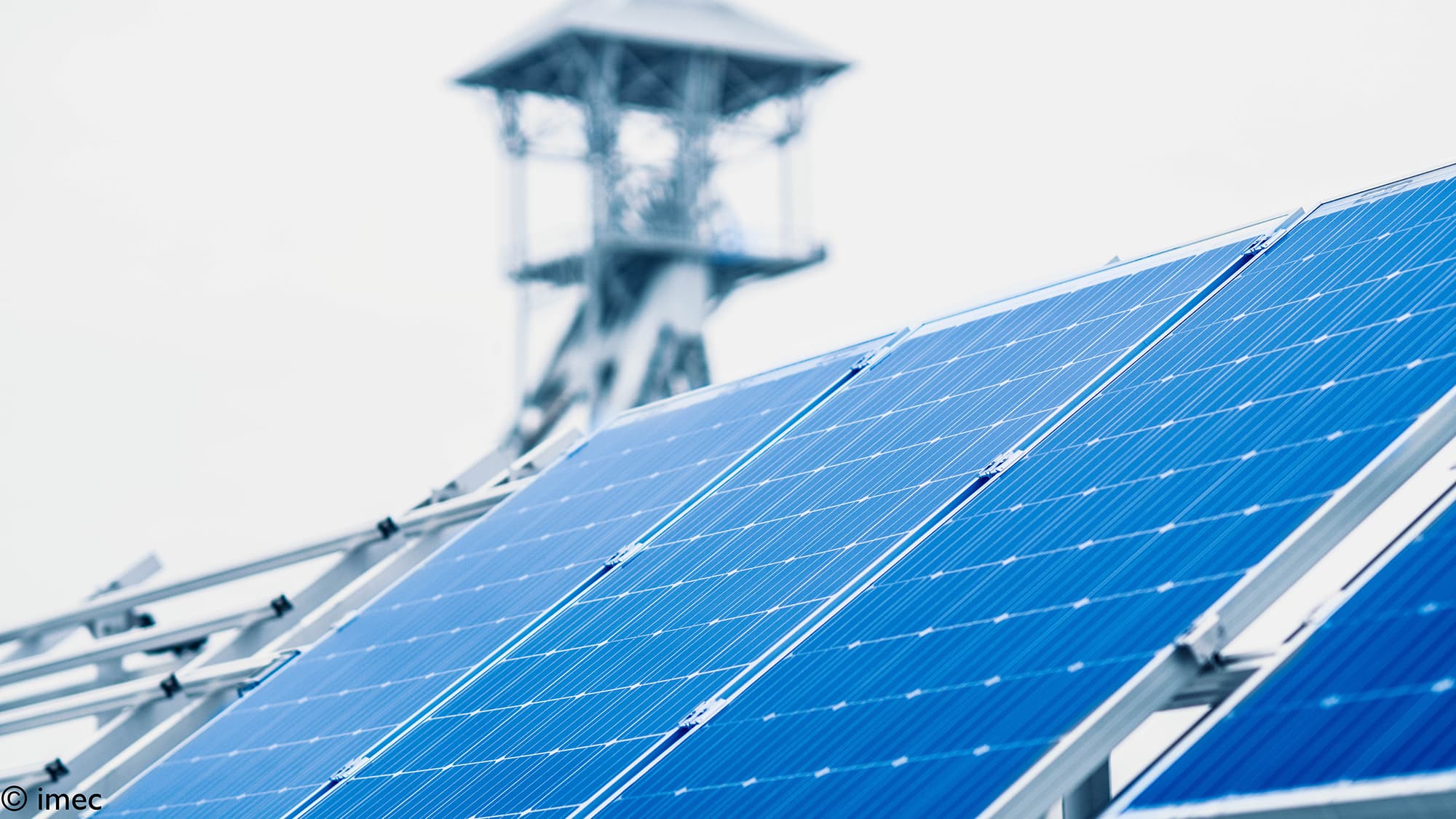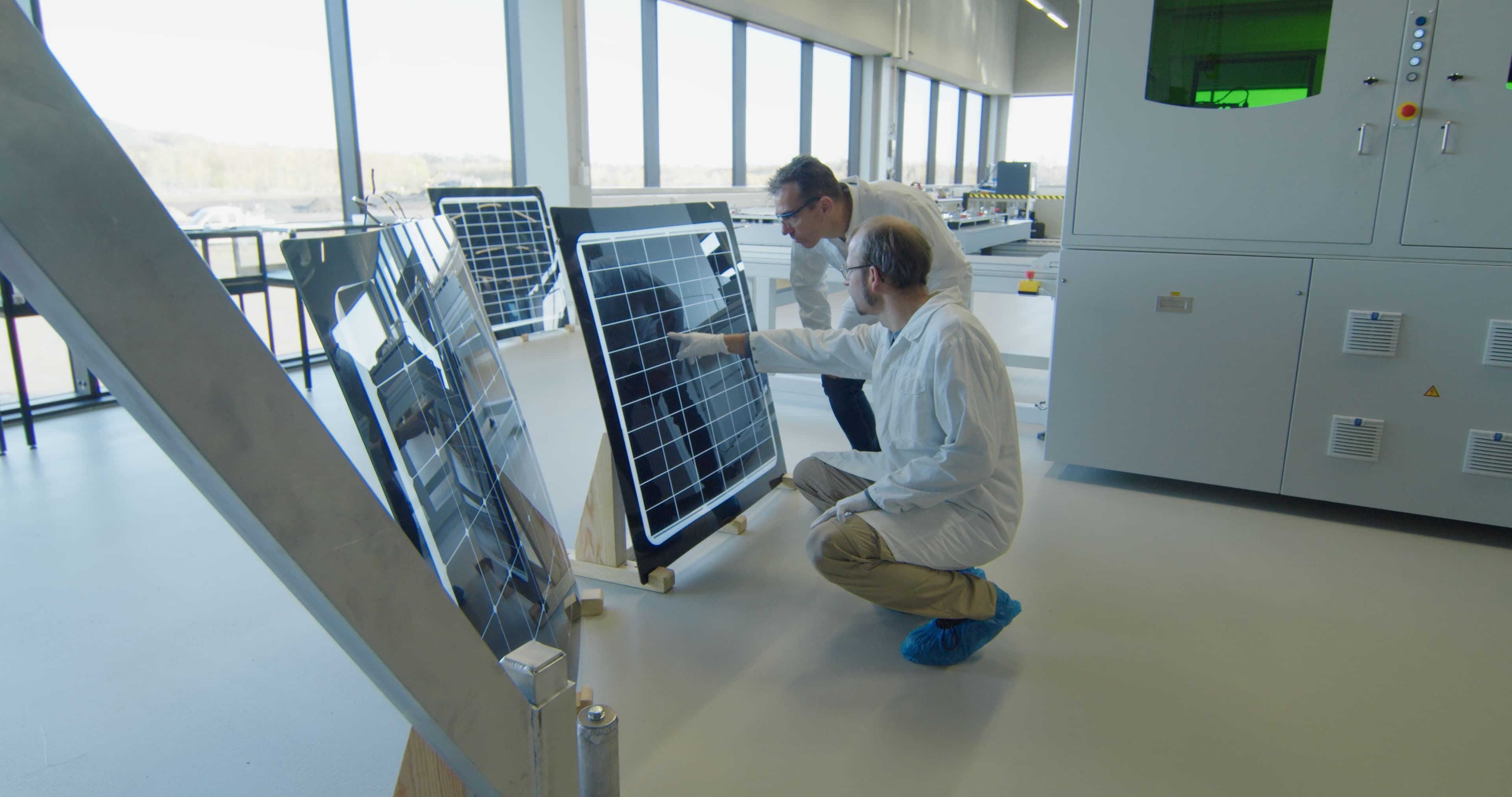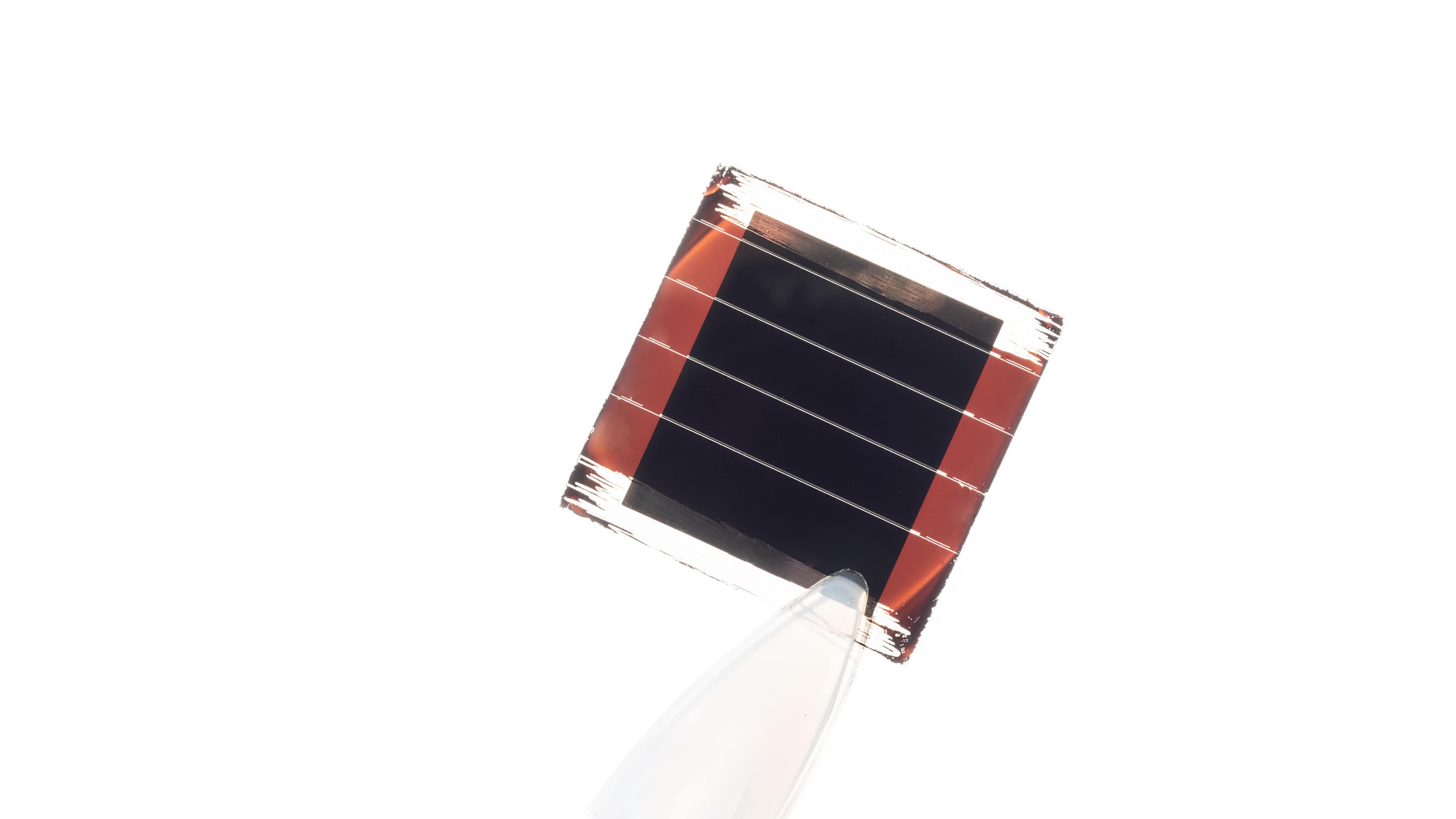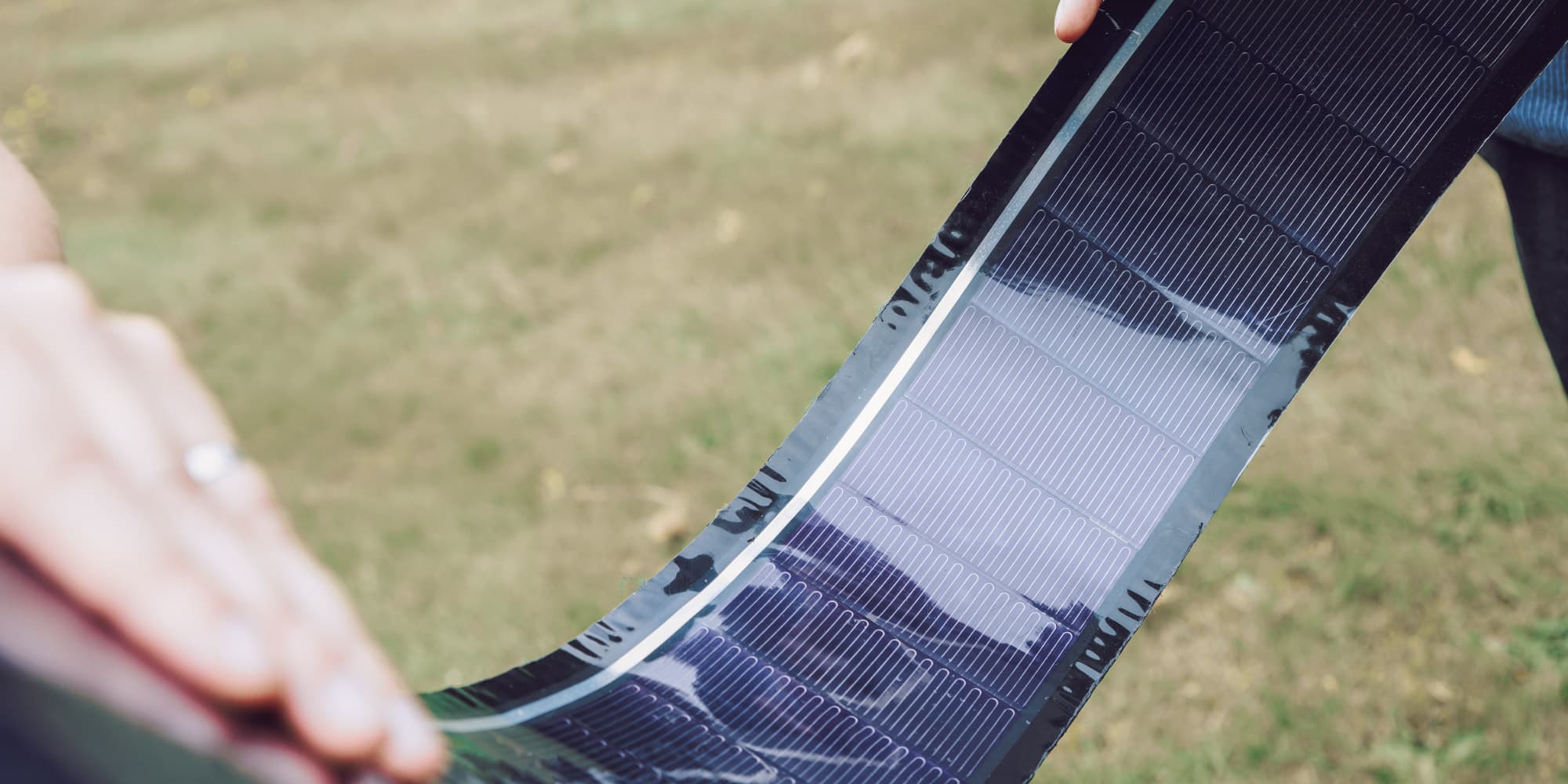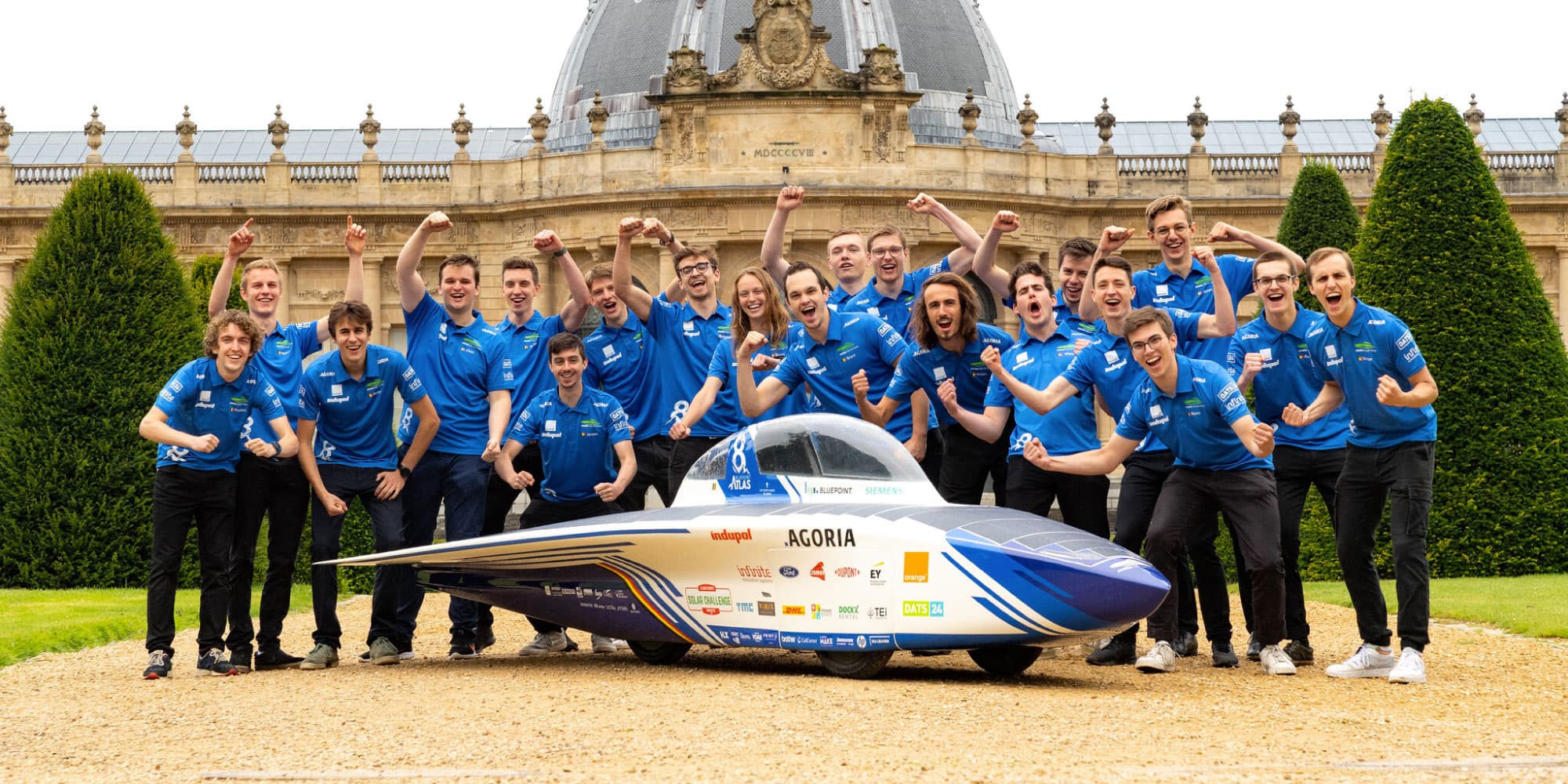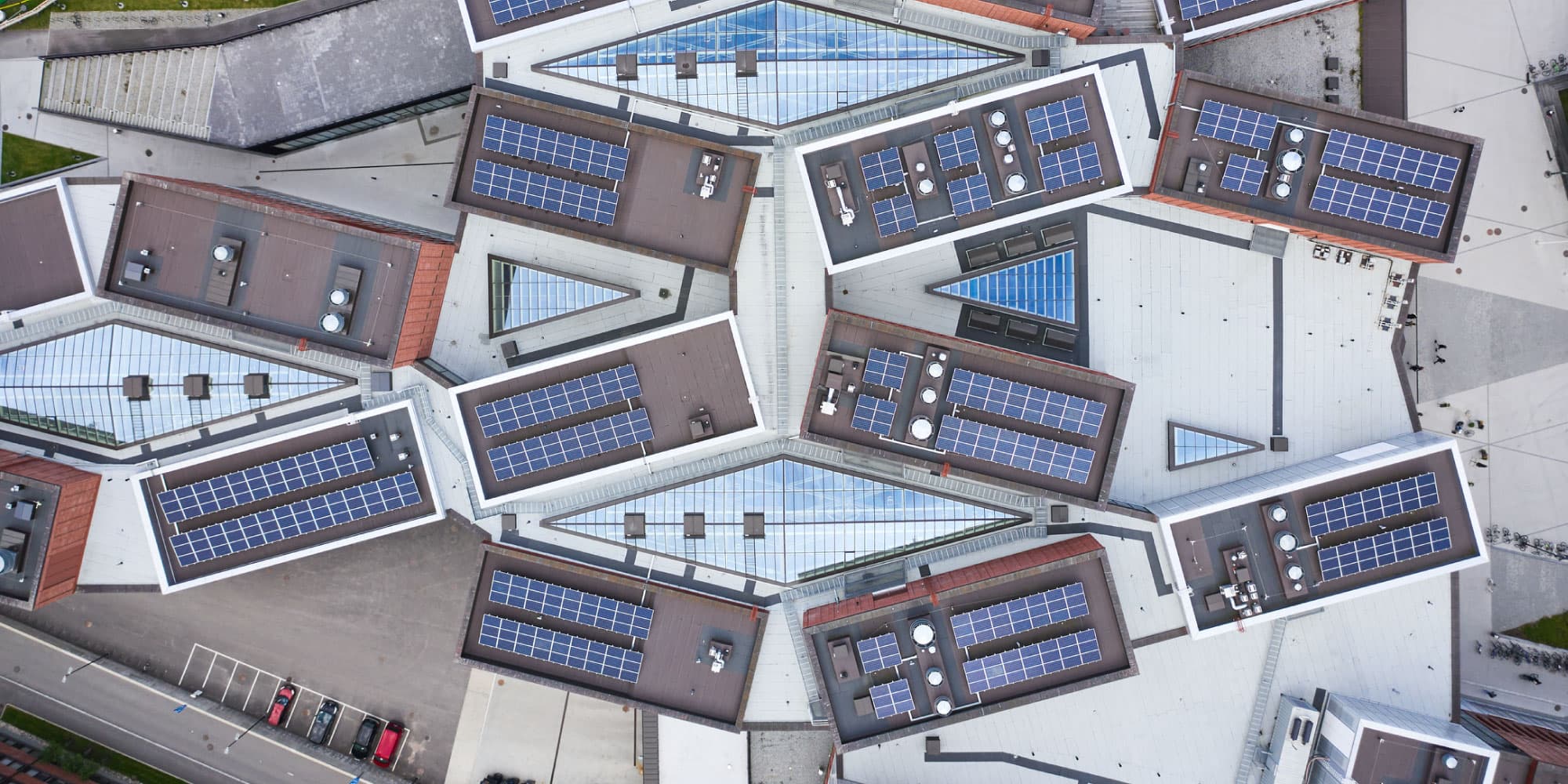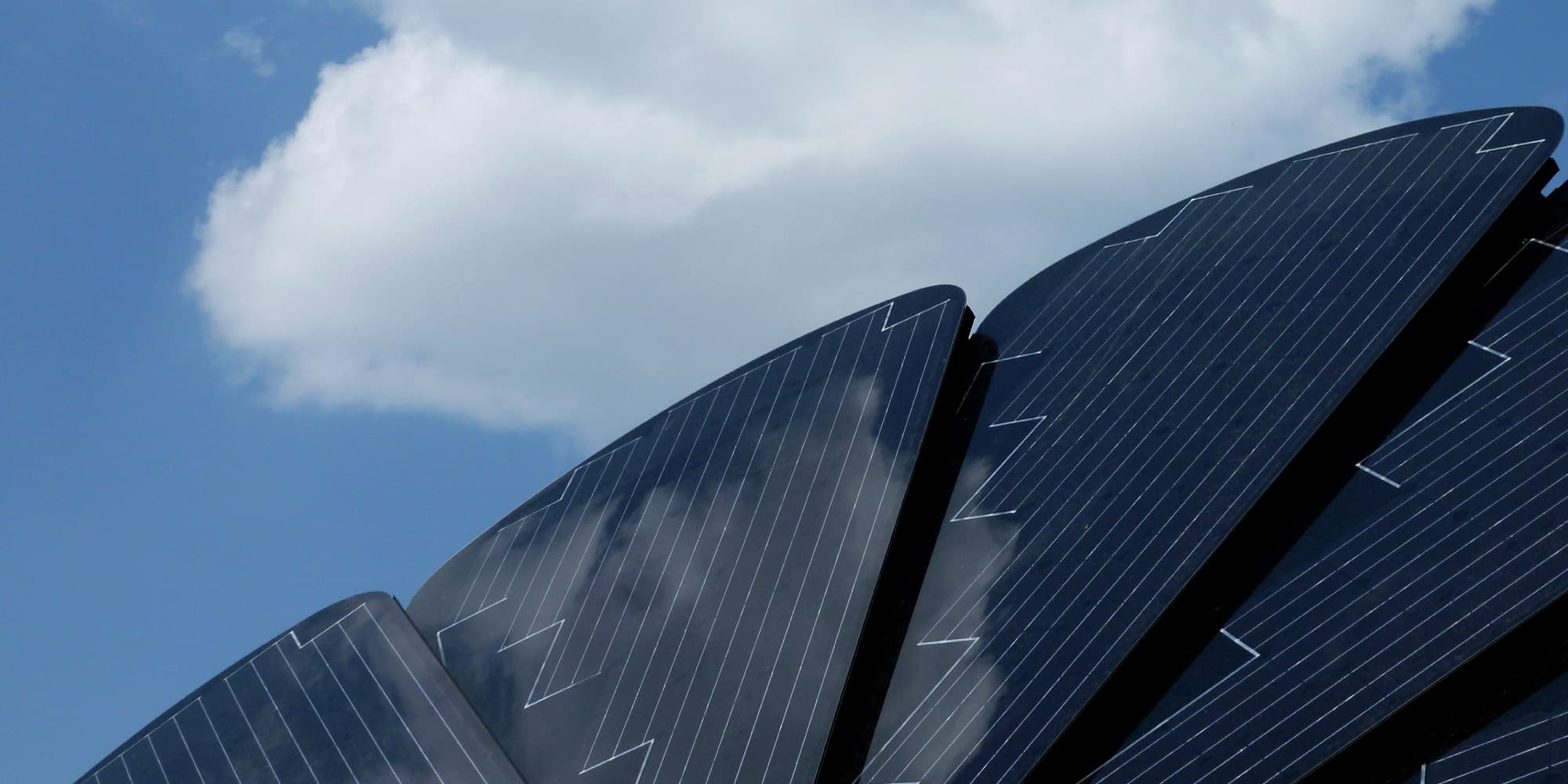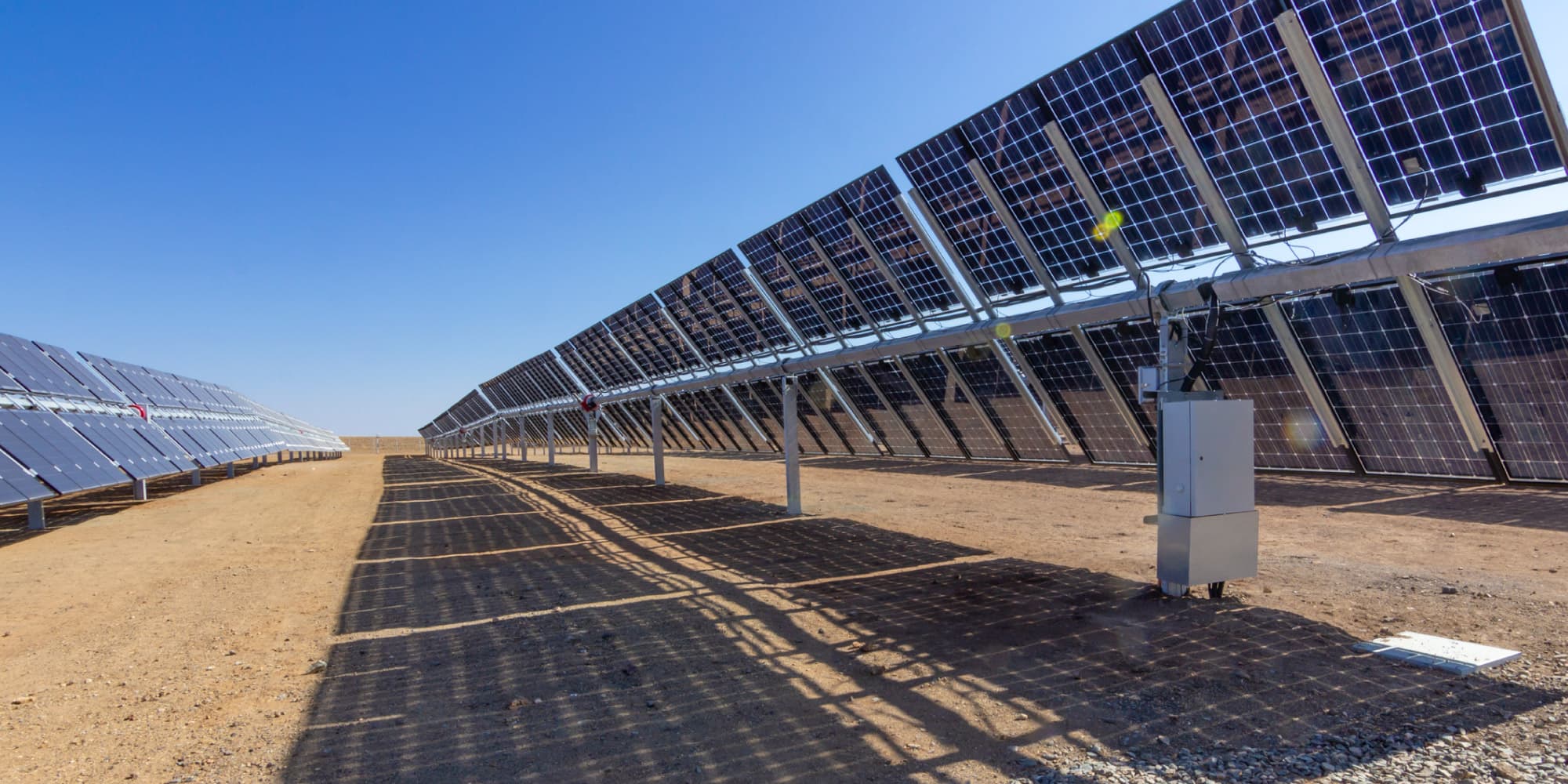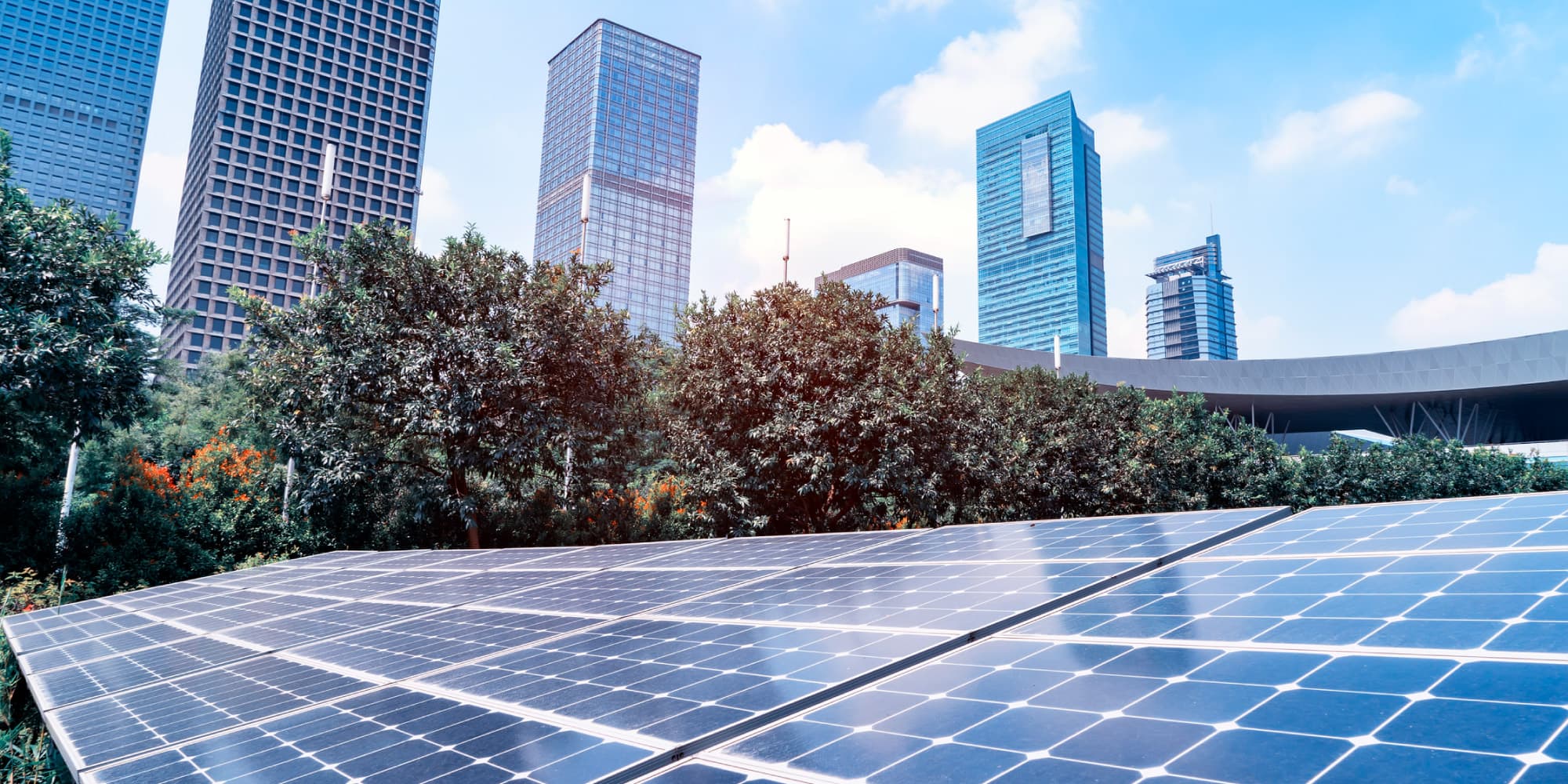Introduction
The cost of electricity made with PV installations has been decreasing rapidly. In many regions it has already dipped below the cost of producing electricity with fossil fuels. So building solar plants has become an attractive business case. But it could even get better. For example by using modules that capture light both on the front- and backside, so called bifacial PV cells. One such cell recently developed at imec can generate up to 25% more energy than a one-sided cell. It has been calculated that for industrial solar plants, this technology could result in an extra yearly electricity production of up to 15%.
Today, we mostly use just one side of the solar cells to generate electricity, the side we direct towards the sun. But there is also light that hits the backside of the modules, e.g. the light reflected from the ground, clouds or diffused light. So why have we covered up the backside of PV cells instead of using it as an additional source of electricity?
“The idea to make solar cells bifacial is not new; it has already been tried and tested more than twenty years ago,” says Jozef Szlufcik, director photovoltaics at imec. “But all other things being equal, bifacial cells have a slightly lower peak efficiency at the front side. This is because when you open up the back side of a module, there will be some part of the light, light with the longer wavelengths, that travels through the cells and escapes.
As a result, the maximum cell efficiency measured from the front side in Watt-peak is lower than for comparable, optimized one-sided cells. And because that maximum efficiency has always been the main selling argument for cells, bifacial technology was hard to sell. Because why would you buy cells with a lower peak performance?”
But today, more and more solar plants come online. And the operators of those plants are looking at a much broader set of metrics than peak performance only when they select PV modules. What really matters for them is the total cost of the electricity produced at their plant, also called the levelized cost of electricity. This LCOE is calculated by dividing all of the costs of a system – investment and maintenance – by the output, i.e. the actual annual energy output times the number of years an installation is used. So their concern is to maximize the average output over a year.
Jozef Szlufcik: “As a consequence they are looking for installations that perform better on average, under all lighting and weather conditions. This is a genuine paradigm shift, also from an R&D perspective. We no longer have to concentrate only on peak performances under ideal, artificial circumstances. We can now start to look at a number of other techniques to improve the average electricity production over longer periods, including suboptimal lighting with clouds, colder temperatures, periods of snow… This has resulted in a renewed interest in, amongst others, bifacial technology.”
Most PV cells today have a metal reflecting electrode that closes off the back. But there is obviously more to making a good bifacial cell than just removing that back layer.
Jozef Szlufcik: “In a standard design of a cell, there is quite some asymmetry between the front and back. On the front, the contacts are designed to be as small as possible, because contacts cover part of the precious PV surface. In a bifacial cell, you need to minimize these contacts on both sides, and that without adding too much processing costs. We do that by adding contacts in the form of fingers and not using busbars. These fingers are very narrow and thin Ni/Ag plated contacts (respectively less than 15 um wide and about 2 um thin). We add these with a simultaneous double side plating process that we have developed and patented specifically for bifacial technology.”
With the new plating process, imec’s cells reach a bifaciality of over 96%. Bifaciality is a measure of the efficiency ratio of the front and backside, and with some additional process tinkering, it is possible to reach almost 100%.
“Usually, in a PV cell the p-n junction is nearer to the front side,” explains Szlufcik. “That junction is the interface between two polarity regions where the energy carriers generated by the incoming photons are separated and then collected. For light that hits the backside of the bifacial cell, that means the carriers will have to travel further through the material to reach the junction. And during that diffusion, they may recombine; we lose their energy. That effect can be overcome by using the highest quality of materials, with a higher average diffusion length in which energy carriers will travel farther without recombining. With such techniques, the best bifaciality ratio that we have reached is around 99.5%.”
Using proprietary processing techniques, imec has created new bifacial n-PERT (BiPERT) solar cells with a best conversion efficiency of around 22.4%. These have an equivalent efficiency of 26%, meaning that the bifacial cells in a situation with a typical ground reflection factor (albedo) of 15 % generate as much electricity as if they would be monofacial cells with a conversion efficiency of 26%.
To make good use of bifacial cells, there has to be ample light that can reach the exposed backsides of the modules. Installing these modules on a slanted rooftop only centimeters from the black roof covering will not make much of a difference. But there are many other enticing use cases, even for small-scale use, where bifacial cells do make a difference.
In PV installations, the backside of modules will obviously not be illuminated by direct sunlight. But there is ample reflection of light from the environment: the ground, buildings, but also the clouds. So having surfaces around with a higher reflection, a higher albedo, is a plus. For PV plants, e.g. it’s better to have the modules installed on white concrete or stone, instead of dark grey material. But even grass will still reflect up to 15% of the light. Also for an installation on a flat roof, you want to make sure that the roof covering is reflective.
“But one could also install bifacial modules vertically instead of directing one side to the sun,” says Jozef Szlufcik. “Think of an installation in the desert where bifacial cells profit enormously from the very high reflection, and where a vertical installation will prevent the front side of the modules from getting covered by dust and sand. Also in regions where there is a lot of snow during a major part of the year, vertical bifacial cells will do a good job: there is again a very high reflection, and the modules are not covered up by snow. Another use case is a vertical installation aligned along the East/West axis, which will result in a more spread-out profile of energy generation. And last, vertical modules may also be used as building elements, e.g. in balconies.”
Before energy suppliers adopt a new technology, they want to know how much more energy they will squeeze from the cells during their lifetime. And that calculation has to take into account a great many parameters. These include the reflection from the ground, but also the space between modules, the height above the ground, the illumination losses through backside supports and cabling, and so on.
Jozef Szlufcik: “To get a better grip on the performance benefits of bifacial technology, energy companies are now developing refined models. These can predict the energy gains on the level of the single bifacial modules, strings of modules and eventually also complete PV plants.
Such a model takes all the relevant parameters into account, and it can single out the most important ones and determine an optimal mix to arrive at the largest energy yield at the lowest cost. One of the issues is e.g. that modules may yield more when they are spaced further apart, but then the real estate per module is more expensive, so it’s important to be able to determine the optimum spacing.
From such modeling we can conclude that in a typical case, the expected extra energy gain of a bi-facial PV power plant can be as high as 15%. That is of course lower than the gains for single cells, but it is extremely promising for the LCOE of large-scale projects.”
Next to optimizing PV cells, imec is also working on energy yield modeling and prediction. In combination with our know-how on cells, this enables us to develop PV systems that are optimized for a low electricity cost (LCOE). That’s why we invite energy producers to come and discuss with us and see how we may partner to develop the best technology possible.

Jozef Szlufcik is director photovoltaics at imec. Jozef received a M.Sc. and Ph.D. degree, both in electronic engineering, from the Wroclaw University of Technology, Poland. He joined imec in 1990 and went on to lead the research on low-cost crystalline silicon solar cells. Jozef was one of the co-founders of the solar cell manufacturer Photovoltech, Belgium where from 2003 till 2012 he held the position of the R&D and Technology Manager. He re-joined imec in 2013 as department director. Jozef Szlufcik has authored and co-authored more than 100 papers, three book chapters and is inventor/co-inventor of 14 patents. He is a frequent chairman on international PV conferences and workshops.
Published on:
1 February 2017

